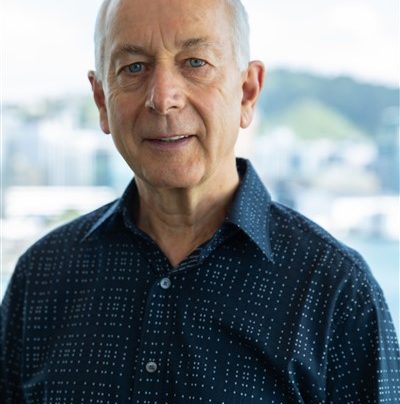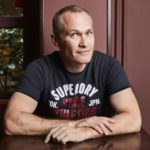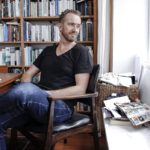Athol McCredie’s home library must host an enviable collection of excellent photography books. We were fortunate enough for him to tell us about some of his favourites. You are warmly invited to celebrate the launch of The New Photography edited by Athol McCredie, 6-7:30pm Tuesday 11th June 2019.
ABOUT THE BOOK:
In this handsome book, leading photography curator Athol McCredie tells the story of the beginnings of contemporary photography – also known as art photography – in New Zealand. Through interviews with the photographers Gary Baigent, Richard Collins, John Daley, John Fields, Max Oettli, John B Turner, Len Wesney and Ans Westra, and accompanied by an outstanding introductory essay, McCredie shows how the break-through approach of personal documentary photography created a new field of photography in New Zealand that was not simply illustrative but rather spoke for itself and with its own language.
ABOUT THE EDITOR:
Athol McCredie is Curator Photography at Te Papa, where he has worked since 2001. Prior to that he was curator and acting director at Manawatu Art Gallery (now Te Manawa), and he has been involved with photography as an author, researcher, curator and photographer since the 1970s. His most recent book is New Zealand Photography Collected (Te Papa Press) which was shortlisted for the 2016 Ockham New Zealand Book Awards.
WHAT ARE YOU CURRENTLY READING AND HOW DID YOU DISCOVER THE BOOK(S)?
I’m researching for an essay on Captain Cook for a forthcoming Te Papa Press book, so I’m reading whatever I can lay my hands on about his voyages. I’m so relieved that only a day before the surprise closure of the Wellington Central Library I discovered there was a copy of Cook’s Journals in their stack room and got it issued.
WHO ARE YOUR FAVOURITE WRITERS ON PHOTOGRAPHY AND WHAT DO YOU ADMIRE ABOUT THEM?
My research for The New Photography caused me to revisit the writings of MoMA curator John Szarkowski from the 1960s and 70s. He was inspirational for some of the photographers in my book. His prose is wonderfully perceptive, urbane and concise. His theoretical frameworks are not so fashionable today but that doesn’t detract from the clarity and eloquence of his writing.
WHAT BOOKS ARE ON YOUR BEDSIDE TABLE?
I have been dipping into James Agee and Walker Evans’s Let us Now Praise Famous Men of 1941. The book concerns three, white, sharecropper families in the American South – with text by Agee, photographs by Evans. I started out loving Agee’s extreme form of literary non-fiction, but in the end I found his writing just too dense, overwrought and circuitous to penetrate very far. The book is described on the jacket as ‘a legend, universally acknowledged as an American classic’. But how such an idiosyncratic book found a publisher is beyond me.
WHAT PHOTOGRAPHY BOOK OR BIOGRAPHY OF A PHOTOGRAPHER HAVE YOU RE-READ THE MOST AND WHY?
I used to frequently browse Szarkowski’s Looking at Photographs myself – as much for the pleasure of his prose as for what he had to say about the photographs.
WHO IS YOUR FAVOURITE LITERARY CHARACTER?
I don’t know about literary character, but in photography it might be Maud Adkin. She appears in Levin photographer Leslie Adkin’s images from the time they were courting pre-WWI to when she was an old lady. I’d love to do a book.
WHAT BOOK HAVE YOU ALWAYS BEEN MEANING TO READ BUT STILL HAVEN’T GOTTEN AROUND TO?
Apsley Cherry-Gerrard’s The Worst Journey in the World. I worked in Antarctica during the 1991/92 season and read a lot about the early heroic era but the length of this book always put me off. My mother read it after my visit to the ice, as though on my behalf, and raved about it. And when I heard Kate Camp discussing it with Kim Hill on RNZ late last year I further bumped up my ‘must read one day’ list.
WHICH THREE INTERNATIONAL PHOTOGRAPHERS WOULD YOU HAVE OVER FOR DINNER AND WHY?
Robert Frank: ‘Swiss, unobtrusive, nice’, said Jack Kerouac. Sounds like my sort of person. Henri Cartier-Bresson: Also unobtrusive, and shy, people often said. I wonder if he ever met Frank? He certainly knew New Zealander Brian Brake, so I have some questions there. See below.
AND NEW ZEALAND PHOTOGRAPHERS?
Peter Peryer: he was always an entertaining talker. Brian Brake: I produced a book on him but it was difficult to separate myth from fact. So I have many questions for Brian. Augustus Hamilton, photographer and collector of images of Māori c.1890–1913: again, someone I’ve researched at length but missing diaries leave many questions to answer.
WHAT WOULD YOU COOK THEM?
For Peter, neenish tarts or jam rolls after his famous photographs of them. I’m sure he would laugh, though it may be a weak joke played before. Lychee tea for Brian. I believe he had a thermos of it always at hand when doing a studio shoot. And I suppose I would have to serve some stodgy and fatty late-nineteenth-century treat like suet pudding for Hamilton.
HOW ARE YOUR BOOKS SHELVED AND ORGANISED AT HOME?
Organised? Well, maybe not, but I know where things are. Most of my books are illustrated non-fiction, which means they come in all shapes and sizes. So dimensions come ahead of subject or author on my shelves. When I contemplate other people’s tidy bookshelves I envy how uniformly sized their choice of books is.






